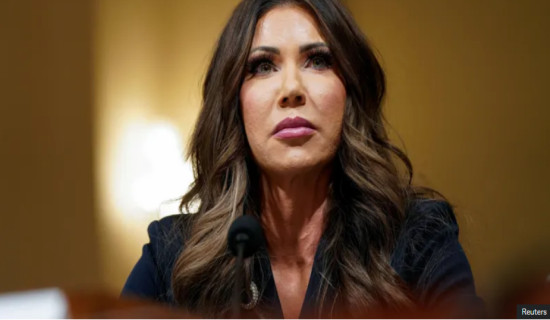- Friday, 19 December 2025
Biopolitics In Women’s Marital Age
Namrata Sharma
The recent announcement of Nepal’s Law Minister to decrease the legal age of marriage for both boys and girls from 20 to 18 has created different reactions from different groups of people. Actually, Nepal had a provision of legal rights of marriage as 18 for girls and 20 for boys before, but after prolonged activism it was changed to 20 for both. Now the government has proposed to decrease the age of marriage to 18 for both boys and girls. The say of the State over the human bodies is part of biopolitics which is often proposed by political parties for various reasons.
In 2021, with the introduction of the prohibition of child marriage (amendment) Bill 2021 by the Indian government, the legal age for marriage had become an important discussion. According to an article of Syeda Faiza Kirmani in Siasat.com, the then PM Modi stated in front of a rally of about 2.75 lakh women from 75 districts of Uttar Pradesh that he wanted to increase the age of marriage to 21 for girls because girls wanted to study further. The Bill had been criticsed by opposition and women rights activists and organisations stating that the Act was a violation of a woman’s personal liberty and did not work on grassroots to resolve the cause of early marriages.
The backlash put the bill under reconsideration. The parties that opposed the bill then were the Congress (I), the Communist Party of India (Marxist), the Samajwadi Party, and All India Majlis-E-Ittehadul Muslimeen (AIMIM). The age of marriage in India currently is 18 for girls and 21 for boys. According to Oxfam India website, there was a task force created after Narendra Modi declared he was going to set 21 as legal age of marriage in India. The report mentioned that early marriage is simply a consequence of dropping out of school and not its cause, the aim should be to ma ke ground level access to education more widespread, quality-driven and gender inclusive. The report also critiqued that maternal mortality will not be curbed by increasing the age of marriage.
Maternal mortality
The increased maternal mortality rate is because of poverty, limited access to resources and wages that collectively contribute to poor health for women. The vicious cycle of poverty leads to maternal mortality rate. During the discussion in India, feminists also brought up the issue that the State’s endeavor to control the sexuality of women as the idea of family ‘honour’ is tied to their bodies. Assuming that sexual activities are supposed to be post-marital prerogative and thus will be delayed by delaying the age of marriage is highly problematic entrusting more power in the hands of the upholders of patriarchal discourse by exercising social sanctions that has been duly accorded to them.
The report also stated that “health”, “reproductive safety”, and “demography” are just jargon-driven clauses adopted by the state to exercise greater control over and criminalise sexual activity by two consenting individuals. The report recognised that the delay signified an emphasis on ‘purity’ and prolonged control over ‘virginity’ of women and girls. This could also be aimed at the non-provision of sexual and reproductive health care and rights to women and who are impregnated outside of ‘wedlock’ which can lead to ostracizing and stigmatising them for engaging in sexual activities outside the socially- sanctioned bonds of marriage.
Currently, 18 is the marital age for both in the Maldives and Bhutan, 16 for girls and 18 for boys in Pakistan, 18 for boys and 20 for girls in Bangladesh; in Afghanistan, the Taliban have legalised 16 for girls and 18 for boys without consent, while in countries like China, Cook Island, Egypt, Fiji, and Gabon it is 21 for both. Globally, in 146 countries state or customary laws allow girls younger than 18 to marry with consent of parents or other authorities; in 52 countries, girls under the age of 15 can marry with parental consent while 18 is the legal age of marriage without consent for males in 180 countries.
A majority of the countries globally have set the legal age for marriage of men and women after they attain the age of 18. Western countries including Canada, the United Kingdom, England and Wales, and the USA have set legal age for marriage at 18 years for both men and women. According to the Universal Declaration of Human Rights’ Article 16, men and women of full age are entitled to equal rights to marriage to found a family without any limitation due to race, nationality or religion. The declaration also states that marriage shall be entered only with free and full consent.
Patriarchal norms
This is where we now need to focus on and have a country-wide discussion on setting the right age of marriage in Nepal. Currently, while deliberating on the legal age of marriage in Nepal, it is important to dwell on all these points. The legal age of 20 currently should be maintained although 18 is the average in South Asia and globally. But more important than that is to give attention to the various ill fate that girls and women face due to them being trapped in the vicious cycle of poverty and family values which make them victims of patriarchal norms of giving more power to the upholders of patriarchy and family honour who want to control the female population. A formation of a task force with correct individuals is required. The task force needs to look into the biopolitics of marital age setting and advise the government on the best solution for the population of Nepal.
(Namrata Sharma is a journalist and women rights advocate. namrata1964@yahoo.com Twitter handle: @NamrataSharmaP )

















